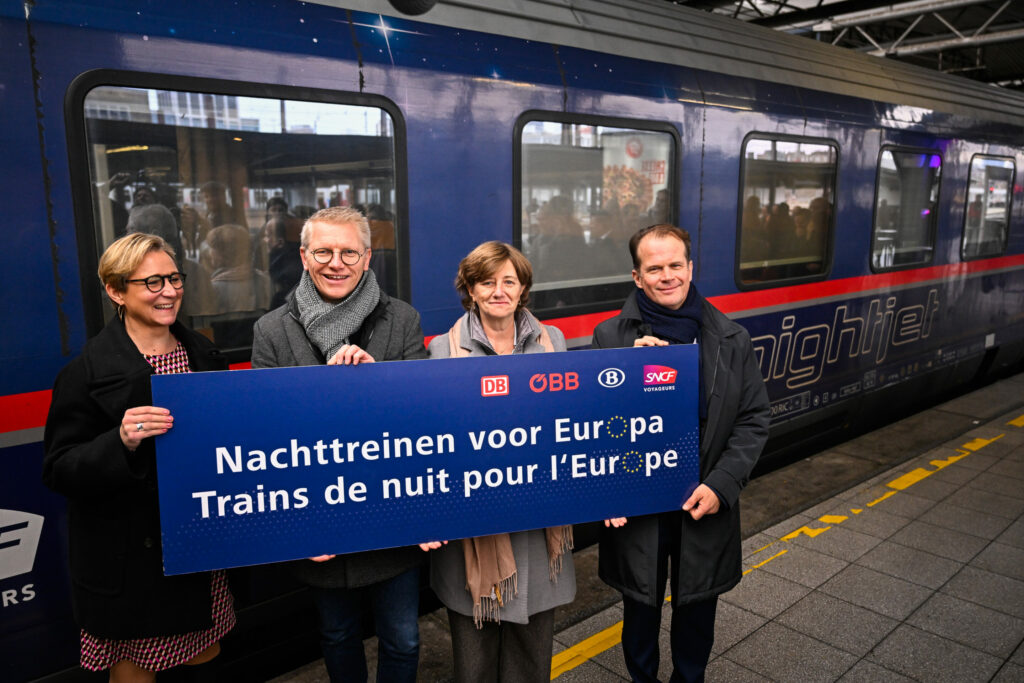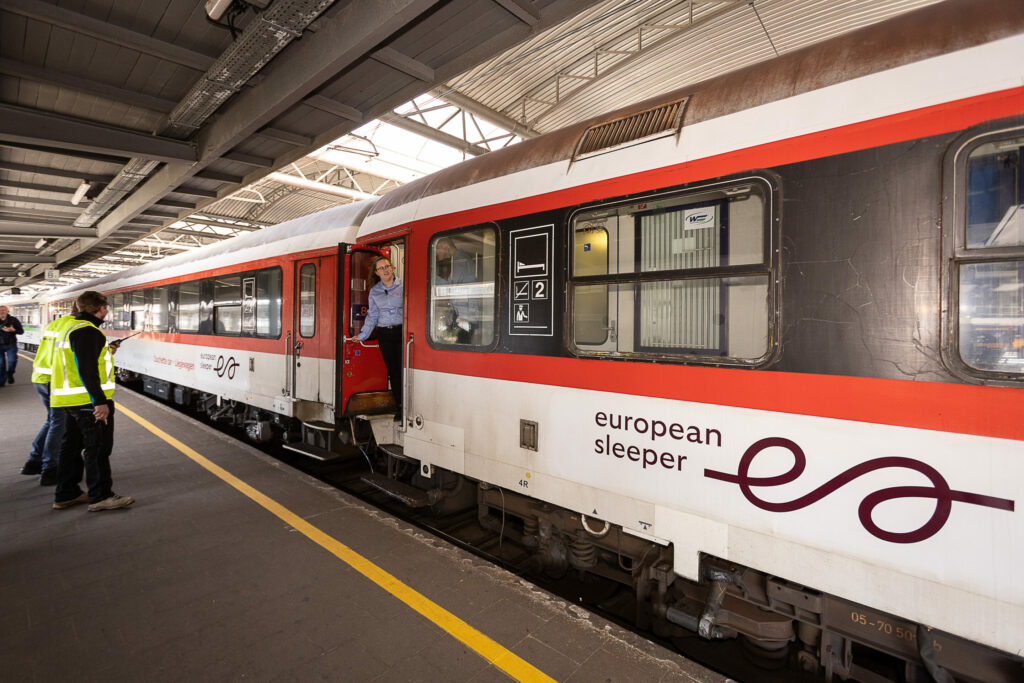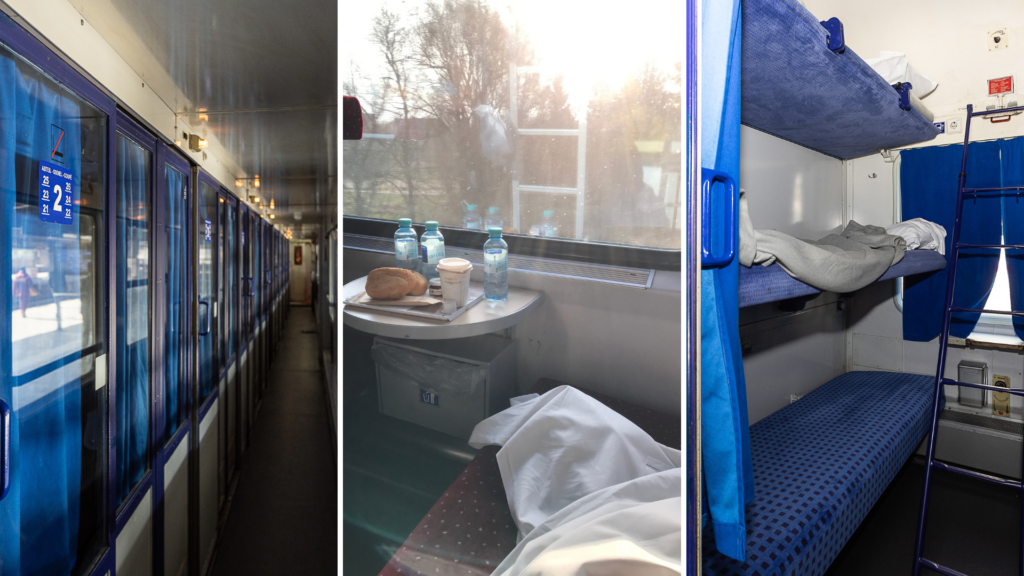Night trains are experiencing a renaissance. After two decades of decline to the point of extinction, the network of nocturnal passenger trains is spreading, buoyed by consumer demand and a start-up ambition to challenge the established modes of continental travel.
Nestled at the nexus of Europe, Brussels is enjoying the fresh approach to rail with night trains connecting the city to Berlin, Prague, and Vienna. A short journey to Paris or Köln will allow you to hop on a sleeper and wake up on the Mediterranean or well into Eastern Europe. And whilst the concept of clattering over moonlit tracks seems antiquated to some, enthusiasm is growing for an era of rail that unlocks new horizons for tourism without the guilt of boarding a kerosene-guzzling jet plane.
Take a look at the maps showing existing routes and night trains that are in the works and it’s hard not to feel a pang of wanderlust. We know that you can get most everywhere by plane but we also know the hassle that comes with it, not to mention the kick in the side of any environmental concern. Even if you don’t buy into the scientific consensus that we’re on an exponential crash course to climate breakdown and the end of humanity’s halcyon days, no one actually likes being crammed into a pressurised fuselage and launched into inner space. It’s a tedious bookend to a week of warm sand and refreshing cervezas.
The realisation that you could swap the runway for the railway (and reduce your carbon footprint tens of times) is compelling for the experience alone. It's not so long ago that night trains were a common choice to tour Europe. At the turn of the millennium, Brussels would often have 20 night trains arriving and departing from its terminals every day. What may now appeal to the youth of today as a novel mode of transport is probably familiar to their parents. And thanks to the lack of investment in the intervening period, the ride quality is probably also very similar (heck, they could well be bedding down on the very same bunks!).

The 2024 night train map of Europe. Credit: Back-on-Track.eu
But with public interest in night trains growing once more, it’s not surprising that companies are stepping up to meet demand. 2023 was an important year on this front with two notable lines opening between Brussels and Berlin. In May, European Sleeper started operations – the company’s very existence is testament to the hundreds of individuals who got the wheels rolling thanks to a successful crowdfunding campaign. Their single “Good Night Train” shuttles between the capitals three times a week.
Then in December, Austria’s national railway company ÖBB stepped in to also offer the Berlin connection aboard its Nightjet service. The company has Europe’s largest night train fleet, putting it at a major advantage as the specially equipped rolling stock is hard to come by since production was mothballed for 20 years. Anticipating a resurgence in overnight rail before the trend gathered speed in western Europe, ÖBB has made significant orders for new coaches that will offer considerable comfort improvements to what other companies currently use. These have yet to be used on lines to Brussels however.

Belgium's Mobility Minister Georges Gilkinet (second from left) with SNCB CEO Sophie Dutordoir (second from right) at the official welcome of the first Nightjet from Berlin, Tuesday 12 December 2023. Credit: Belga / Laurie Dieffembacq
Let the good times roll
At present, the two operators have been coexisting by running on alternate days. Management behind both companies told The Brussels Times that this line in particular benefits from a strong demand for alternative transport modes to flying. “The market is big enough for both of us,” ÖBB spokesperson Bernhard Rieder says. He pointed to sleeper cabins sold out months in advance. It’s a similar story for European Sleeper – especially for the more expensive comfort option (private compartments from €159 pp each way).
Worries that one service might cancel the other out have not materialised; if anything the opposite effect has been observed, with a greater offer inducing a rise in demand. “We expect demand to grow as the total capacity of our combined trains converge on this line,” Rieder confirms. A similar phenomenon has been seen elsewhere: the introduction of the cheaper Ouigo trains in France led to a rise in passenger numbers across all services and have helped tip the balance in favour of rail. The novelty of night trains and the advantage of travelling far without wasting hours or compromising on sleep has seen their popularity soar, even if some find the ticket prices prohibitive.
Co-founder of the European Sleeper Chris Engelsman highlights a lack of EU investment that has limited the night train sector. The company is seeking creative solutions to the lack of carriages, which includes leasing and retrofitting (its current train dates from the 1950s). He believes that passengers today are recognising the advantages over other transport options, even if regulations and financial incentives offered by states and the EU are not yet fully behind the development. “Users see night trains are the perfect answer on medium and long distances; they avoid many of the practical complications that come with flying.”

The European Sleeper has revived interest in night trains and hopes to link Brussels to Barcelona in the coming years. Credit: Belga
Having taken the night trains to Berlin on several occasions I can speak for their ease, which beats any other transport in terms of delivering you to the centre of the city without need for additional legs to the journey. There’s also a thrill in waking at your destination and having a whole day unbothered by the routine of travelling. Then again, one’s overall impression of the night trains depends largely on how well you sleep. As mentioned, comfort comes at a premium and though the “couchette” option allows you to lie flat, your slumbers will be regulated by mechanical jolts, intervals of stopping and starting, and quite likely some snuffles and snorts from cabin co-occupants. It’s certainly an occasion to deploy whatever sleep-aids you might sometimes reach for.
For some folks this will be the clincher that turns them off the night train option. But demand is sufficiently high that the line is viable in spite of the caveats. Engelsman acknowledges the need for modern carriages but in the mean time says the existing service has already won support from passengers who are happy to take the rough with the smooth. Likewise, Rienard concedes that night train as a concept is never going to be the transport for the masses: the complex logistics involved to essentially run a small hotel on rails is difficult to scale. But it certainly can be part of the alternative offer to aeroplanes… if the EU pulls a few levers to effect the modal shift.
A legislative track to the future
Three years have now passed since the “European Year of Rail” set out to convince policymakers and the public that trains are critical to the EU’s aim to be climate-neutral by 2050. Despite Europe being far better at trains than most other places in the world, the initiative highlighted the challenges in connecting Member States, with only 7% of the distance covered by rail in 2021 crossing borders. It’s not that operators don’t want to go international, rather that this has been made cumbersome when it should be seamless. “Regulations are different in every country, they are complicated and not designed for cooperation,” Engelsman affirms.
Take the Iberian Peninsula (Spain and Portugal): 100 million passengers cross onto the territory from France every year, of which less than 2% make the journey by train. The problem has to do with EU regulations in 2007 undermining efforts to harmonise cross-national connections. The long-established convention that border controllers must speak both languages (in this case French and Spanish) was altered to stipulate that drivers must also be conversant in both, a demand that has necessitated translators to accompany less linguistically adept drivers. The ruling effectively put an end to night trains between France and Spain for five years. Night trains ceased to operate on the Iberian Peninsula, such were the complications of crossing the border.
Commenting on the importance of inter-operability, Salim Benkirane – spokesperson for ALLRAIL, which represents independent passenger rail companies – points to a disjointed EU network in need of standardised systems if new rail lines are to flourish. This is especially true for night trains, which almost entirely operate across several countries. A number of EU initiatives will help overcome these obstacles, but they will take time to implement. Among them, the European Rail Traffic Management System aims to make both locomotives and infrastructure better integrated. When in place, this will help realise the Trans-European Rail Network, which is self-explanatory. Once complete, gone will be the days when you needed to change trains multiple times if you try to cross the continent by rail.

Sleeper carriages are admittedly rather dated, with new rolling stock only now being built (and prohibitively expensive for some). Credit: Belga
But it is difficult to conceive of a massive uptake in rail – and with it night trains – without considering the competition of the aviation sector. Despite best intentions to copy the budget airline model with low-cost trains, airlines in Europe enjoy several fundamental advantages. Most pertinently, the aviation sector pays zero duties on aviation fuels and airline tickets are also exempt from VAT, allowing companies to woo passengers with unbeatable ticket prices. Together these exemptions amount to billions of euros each year – money that might otherwise be used to finance a green transition underpinned by rail.
Proposals to level the playing field between transport sectors were made in the European Commission’s Energy Taxation Directive (part of the flagship Fit For 55 climate objective). However not all changes were adopted, notably that which would put an end to the tax breaks for airlines. In Belgium, measures to disincentivise flying are broadly popular, with clear favour for promoting trains rather than preserving the hegemony of planes. Belgium has also been exemplar in efforts to encourage the nascent night train market: in 2023 the country waived track access charges (TAC) and electricity fees for night train operators, a welcome boost but one that would need to be taken up by other Member States to really make a difference.
Related News
- Belgium in Brief: Are night trains just for nerds?
- Belgians embrace holidays by train despite cost challenges
Back-on-Track, a lobby to improve night trains in Europe and make them more affordable, calculates that cutting VAT on cross-border routes and reducing TAC would bring down ticket prices by an average of 15% for night trains across Europe. In this context, the price advantage of budget flights would be greatly diminished and would mark a decisive step in lowering emissions related to the transport sector.
Efforts to regulate the aviation sector are often framed as anti-democratic attacks that place climate concerns above individual freedom. But must we sacrifice mobility to environmental imperatives or can we achieve the winning combo of efficient and comfortable travel that doesn’t cost the Earth? Night trains have piqued interest across Europe and with a bit of regulatory support could really make the leap from niche option to the airline-beating transport of choice.
The wheels are still gaining traction for this new direction in European travel. But if policymakers get on board, the vision could become reality.

